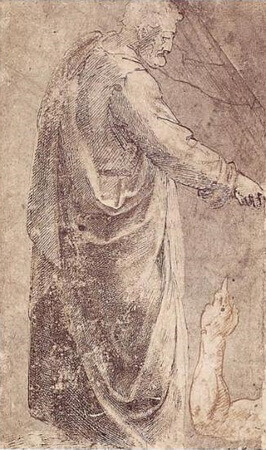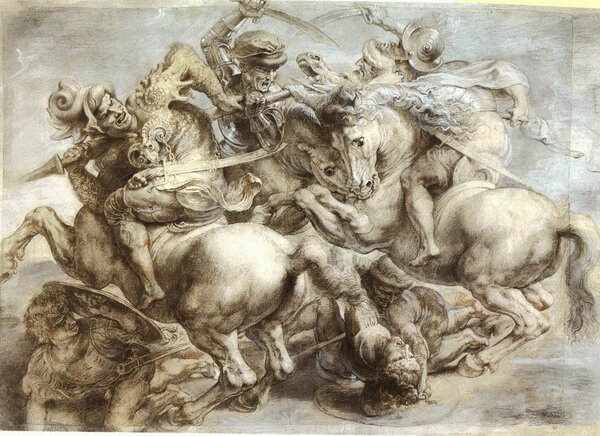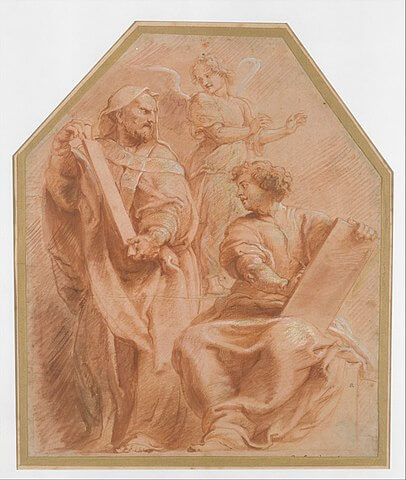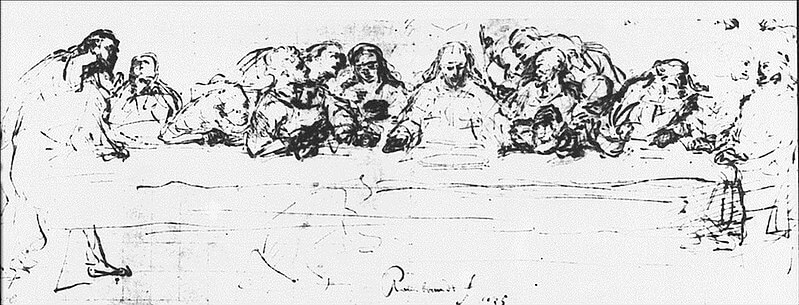Is it OK for beginner artists to copy other artists’ work during the learning process? Allow me to shed some light on the subject of copying art and explain the proper way to do it.
The answer is yes; it`s a beneficial practice to copy when learning to draw. Copying the works of art of the old masters was part of classical art education since the Renaissance. Learning by copying the great masters` artworks is what Leonardo da Vinci recommends. With time and practice, you will develop your own unique drawing style, but you will need to learn the basics of drawing first. Copying the works of prominent artist can be of great help to you in achieving your goals.
The Tradition of Copying the Old Masters` Works in Art Education
There is a long tradition of copying in fine arts education. Through copying, students learned from the works of the great masters.
What Did Leonardo da Vinci Say About Copying?
Leonardo da Vinci (1452 – 1519), one of the greatest artists of all time, also emphasized the importance of copying in his notes:
“First draw from drawings by good masters done from works of art and from nature, and not from memory; then from plastic work, with the guidance of the drawing done from it, and then from good natural models and this you must put into practice.”
“The artist ought first to exercise his hand by copying drawings from the hand of a good master.”
“The youth should first learn perspective, then the proportions of objects. Then he may copy from some good master, to accustom himself to fine forms. Then from nature, to confirm by practicing the rules he has learned. Then see for a time the works of various masters. Then get the habit of putting his art into practice and work.”
Early Drawings by Michelangelo
In his early period, Michelangelo Buonarroti (1475-1564) made copies of the works of Renaissance masters Giotto and Masaccio.


Rubens and Rembrandt Also Copied
Peter Paul Rubens (1577 – 1640) was a 17th-century Flemish Baroque painter. Rubens was a great admirer of Leonardo da Vinci. In 1603 Rubens made a copy of the central group of the Battle of Anghiari, referred to as the lost Leonardo.

Public Domain. Image source
Rubens also copied works by other Renaissance painters, such as Raphael. These drawings were important for practice, but they also served as reference material used by Rubens for his works.
Rubens made the drawing below based on a fresco by Raphael.

Rembrandt van Rijn (1606 – 1669), a Dutch Baroque painter and printmaker, made a copy of Leonardo da Vinci’s Last Supper fresco.

Public Domain. Image source
The Practice of Reproducing Sample Drawings in European Art Schools
Sample books have been helping to teach drawing since the first academies of fine arts were founded in the Renaissance.
Cennino Cennini (about 1370–about 1440) was a late Gothic painter and writer. In his famous book ‘Libro dell Arte‘ he also describes copying from sample books as a general practice.
Charles Bargue`s Drawing Course
One of the best and most famous drawing courses based on copying is the Drawing Course (Cours de dessin) by Charles Bargue (1826-1883) and Jean-Leon Gerome (1824-1904) The book consists of lithographs intended for copying. Van Gogh and Picasso also copied Charles Bargue’s lithographs.
Due to the increased interest in academic drawing, the book is still in use today in educational institutions that focus on classical realism.
The St. Petersburg Academy of Arts
Vladimir Mogilevtsev, Instructor of drawing at the St. Petersburg Academy of Arts, talks about copying art in his book „Fundamentals of Painting”.
According to him, academic training begins with copying drawings of the best European artists, followed by studying the shape and proportions of antique sculptures. It was only after mastering these things that students could begin to draw live models.
What Can You Learn by Copying the Masters of Art?
Copying requires a lot of attention. When copying the works of great masters, it is recommended to perform each phase thoughtfully, analyzing and following the steps of the process of drawing and painting the original work of art.
1. Copying allows you to learn various drawing and painting techniques, exploring the materials and methods used by artists in creating their works.
2. Additionally, it provides insights into artistic composition. By closely observing visual elements and compositional principles, you can understand how great masters used lines, shading, and brush strokes in their art.
3. You will learn the drawing fundamentals. As you copy the artwork, you’ll notice how the great masters applied the principles of perspective, constructive drawing techniques, and human anatomy. In the case of human or animal figures and portraits, you can observe how they applied their anatomical knowledge and determined the right proportions.
4. Moreover, the process contributes to the development of a refined taste in fine arts. By embracing a variety of art history information, you will be able to determine over time which artwork is good and why.
Once you have the basic knowledge you need, you will be able to draw inspiration from your environment, life, or fantasy world and successfully create your artwork.
Where to Find Art for Free Copying?
One of the easiest ways to find the right artwork to copy is on the Internet. The works of the old masters are now in the public domain and you can use them without permission.

Books are also excellent resources for works of art to copy. If you’re lucky enough to live in a place where you can visit a museum with a rich collection, you can make a copy of the original artwork right there.
Once you’ve made a copy of a work of art and signed it, don’t forget to give credit to the original creator.
The Correct Way to Copy an Artwork
Copy the drawing or painting freehand, it is not recommended to use a compass or ruler, as these do not improve the visual perception of the proportions.
You can copy the drawing to a smaller or larger size, thus improving your sense of proportion.
Copying drawings will be easier if you use guidelines and define vertical and horizontal axes, as well as axes at certain angles.
The first step in the process of drawing is to arrange the subject correctly on the sheet and define its boundaries.
At the beginning of the drawing, first, define the larger blocks of shapes, then the smaller shapes, and finally the small details.
The correct procedure for the tonal rendering of a drawing is to develop it evenly, at the same time, in all parts of the drawing.
You can reproduce a drawing properly if you see it at the same angle as your drawing sheet. Both need to be at the focal point of your vision.
Final Thoughts
As I explained above, copying is an important part of learning to draw and can be a great help in gaining basic drawing skills. Over time and with a lot of practice, you will develop your unique style, but to do that you must first learn the basics of drawing.
One of the greatest artists of all time, Leonardo da Vinci himself, emphasizes the copying of the works of the great masters as an important part of the learning process.
Prominent painters, such as Michelangelo Buonarroti, Peter Paul Rubens, Rembrandt van Rijn, Pablo Picasso, and Vincent van Gogh, also learned the profession by copying. This practice is still followed today in institutions teaching classical realism, including the St. Petersburg Academy of Arts.
We’d love to hear your thoughts! Leave a comment below and share your insights on this topic. If you found this information valuable, consider sharing it on your social media platforms. Also, explore more articles on our website for additional knowledge

Debora
My name is Debora, and I’m the founder of Drawing Fundamentals. I work as a civil engineering technician. I acquired the basic knowledge necessary for freehand and technical drawing during my school training, further developing and perfecting these skills throughout my years in the profession. Through my blog, I aim to assist anyone interested in learning to draw.

